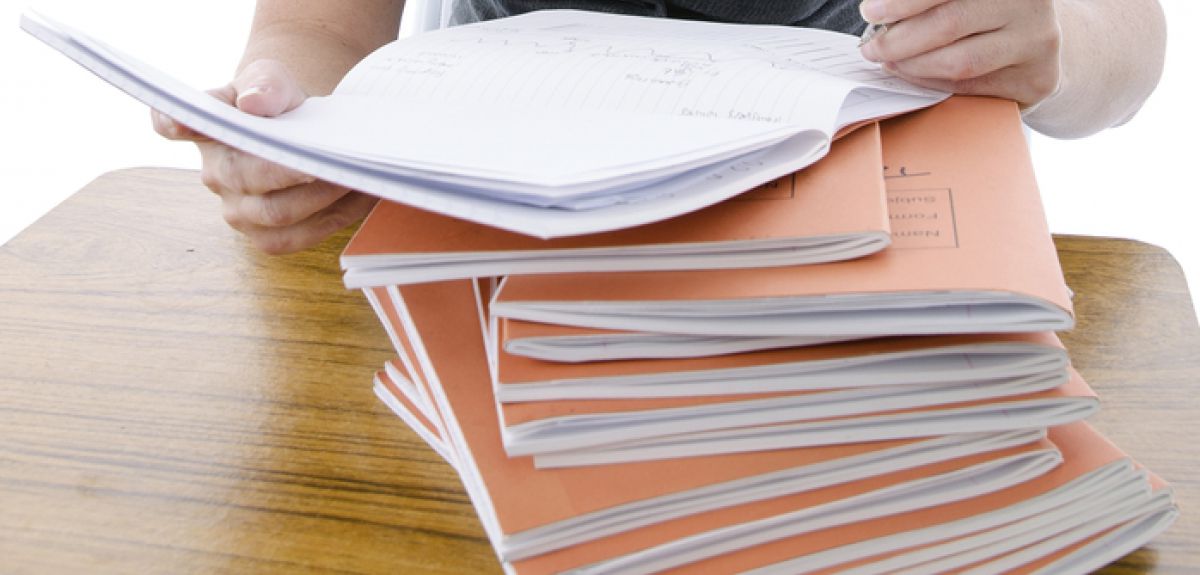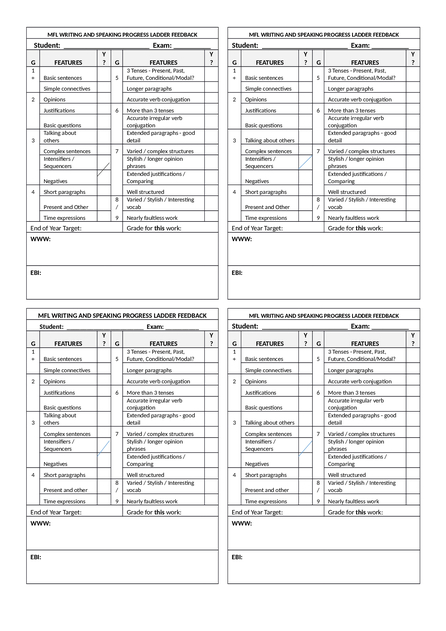 French Writing GCSE and KS3 Marksheet
French Writing GCSE and KS3 Marksheet
I started teaching English to Speakers of Other Languages (ESOL) in an adult education college in 2009 and although I did set writing homework, it was voluntary. So, I wasn’t obliged to do lots of marking and therefore didn’t appreciate the levels of marking teachers actually have to do. So what changed?!
In 2015, my life changed (!) and I began teaching KS3 French and GCSE French in secondary schools. At this point, I was expected to set and mark written homework for 8-11 different classes on a regular basis. Therefore, in the evenings, like many other secondary school language teachers, I spent hours marking essays that students had written. I circled errors with marking codes, such as g (grammar), voc (wrong vocabulary), sp (spelling), ^ (missing word) and w.o. (word order) ready for them to correct themselves or in small groups during the next lesson. In addition to the marking codes, I also spent hours writing What Went Well (WWW) and Even Better If (EBI) comments.
This was, quite frankly, a complete waste of time and effort – mainly due to the fact that with the urgency to complete the marking as quickly as possible, the few bullet points I did add, whilst they did reflect what the students had done positively and what they could do to improve, didn’t really lead to much noticeable development in their writing skills or the future writing they produced. For example:
WWW: original work
EBI: ensure you use capital letters for all nouns
I realise that this was not best practice and since I am always on the lookout to improve my teaching, I felt the introduction of the reformed 9-1 GCSEs for French was a great opportunity to review how I marked French writing GCSE and KS3 to a better effect.
What’s The Point of The Writing Marksheet for KS3 French and GCSE French?
My three main aims when considering how to produce a marksheet were to make:
a) my life easier when it came to marking writing
b) it crystal clear to students what they had to do in order to improve their current written French work
c) students aware of what they must consistently include to improve their future writing in French
For this reason, I used my department’s progress ladder for MFL speaking and writing, which from the GCSE 9-1 mark scheme loosely illustrates the elements a student needs to include in their written or spoken KS3 French or GCSE French to get a grade 1 to a grade 9.
For example:
GRADE 1 – short simple sentences / connectives
GRADE 2 – opinions / negatives / justifications
GRADE 3 – talking about others / sequencers / intensifiers
GRADE 4 – two tenses / time phrases
etc.
I then combined these with space for feedback.
How Does The Marking Feedback Sheet Work?
I have put each of the elements above, individually, into a grid with space for a tick to show if that item has been used (my department requires two correct applications of that element to warrant a ‘tick’). If a student fails to add an element, I add a circle instead of a tick to show that that element has not been added at all, or, that there is only one example, which doesn’t therefore qualify. Should you so wish, there is also space for a WWW and EBI, as well as space to show the end of year target grade for the student, plus what they have got for this specific writing piece.
All of my students are asked, as part of their homework learning time, to learn the elements contained within the progress ladder off by heart and then include all of them in all their writing a speaking. Before the next piece of work, I guide them to review their last 2 feedback sheets for writing and speaking, in order to refresh their memory and ensure they remember to include all the elements in their impending work.
Summary
Marking can take hours and hours and quite frankly, it’s not always worth the time that’s spent on it. Students are often too lazy to read and implement actions to detailed written feedback, so please consider using my quick and easy feedback sheet for KS3 French, as well as GCSE French (or any other MFL for AQA) to easily show what a student is including well in a piece of written or spoken work and what they need to remember to include more of. I hope the document helps you!
Download the KS3 French and GCSE French Writing Marksheet for Feedback
It would be great to know how you mark writing at KS3 and GCSE for modern languages and if my marksheet grid actually helps save you time and helps your students to see clearly how they can improve. If it’s useful, please do leave me a comment below.
Join TheIdealTeacher.com’s exclusive mailing list below to keep up-to-date with all of my latest content, including fab teaching ideas and activities!





